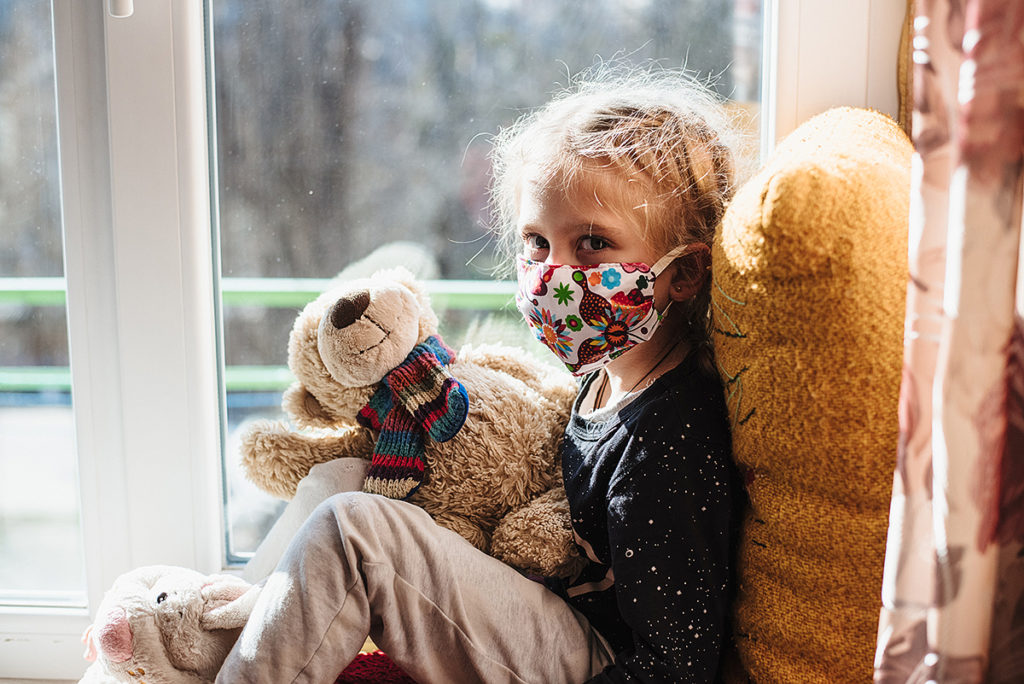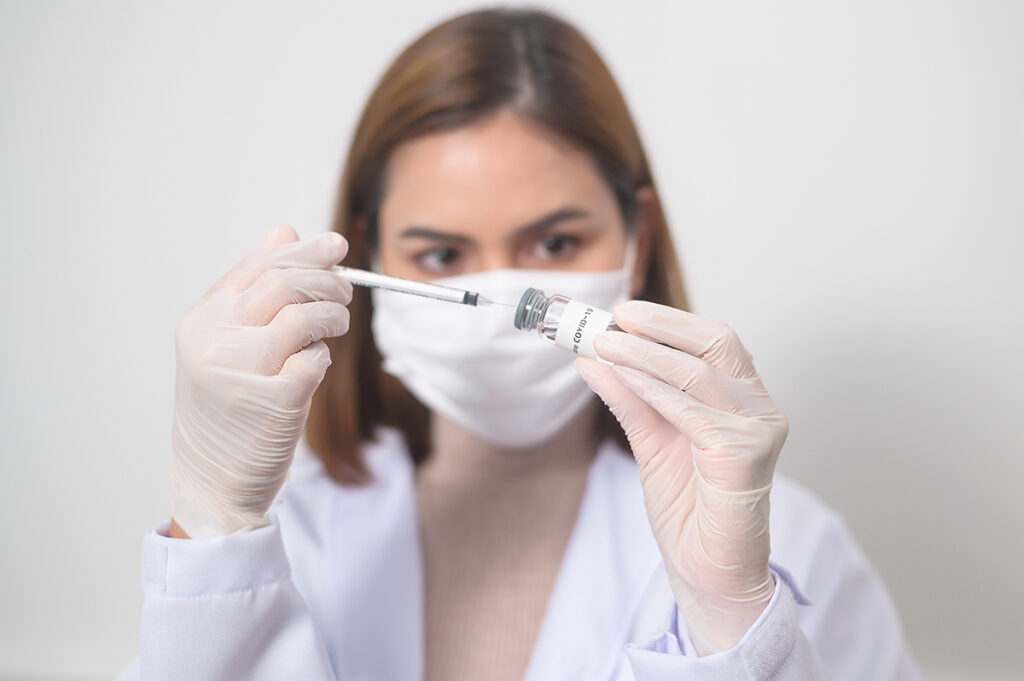Review of accumulated knowledge and observations about COVID-19 in children
Morbidity
In the European Union and the United Kingdom, 4% of COVID-19 cases occur in people under 18.
Incidence by age group:
| Age group | % of the total number of sick children |
|
0 — 4 y.o. |
24 |
|
5 — 11 y.o. |
32 |
|
12 — 18 y.o. |
44 |
These figures are confirmed cases of the disease. It is crucial to keep in mind that children do not prioritize testing for coronavirus since their symptoms are milder or do not appear at all. In the absence of symptoms, testing for coronavirus is usually not performed.
Symptoms of coronavirus infection
Analysis of pediatric cases in 21 European countries revealed the most common symptoms:
- fever — 64% of cases;
- cough, sore throat, nasal congestion-54%;
- headache — 28%;
- shortness of breath — 25% of cases;
- gastrointestinal symptoms — 22%.
Doctors worldwide note a large percentage of children with COVID-19 who have the disease in an asymptomatic form. Studies show that between 4% and 28% of confirmed cases are asymptomatic.
Epidemic surveillance data is also not accurate, as it is often based on the presence of symptoms.
As a result, COVID-19 in children may go unnoticed or undiagnosed.
Disease prognosis
In General, coronavirus disease occurs in children in a milder form than in adults. Also, children are more likely than adults to have an asymptomatic course of the disease. One possible reason is that a more effective innate immune system, which quickly suppresses the virus’s reproduction, and specific symptoms of the disease do not have time to develop.
Severe and critical forms of the disease that require hospitalization develop in about 4-5% of children with COVID-19. The severe course is most often observed in children with gastrointestinal symptoms.
Deaths in children are infrequent — in 0.03% of cases. For example, adults’ mortality rate is 5.8%, and in the elderly, over 90-36%.
Hospitalization by age group:
| Age group | % of the total number of sick children |
|
0 — 4 y.o. |
10 |
|
5 — 11 y.o. |
3 |
|
12 — 18 y.o. |
4 |
Newborns and infants are most vulnerable to COVID-19, but they have the lowest mortality rate (0.006%) and the most favorable outcomes.
It has also been established that children develop coronavirus-neutralizing antibodies after the disease.
Virus distribution
In patients with COVID-19, viral RNA is found in blood, saliva, nasopharyngeal samples, urine, and stool. In the presence of symptoms, children can secrete viral RNA as intensively as adults. The viral load in children under 5 years of age, with mild to moderate coronavirus infection symptoms, is higher than in older children and adults.
The question of the viability of the virus released by sick children remains open. It is also unclear how contagious asymptomatic children are.
Children stop spreading the virus through the respiratory tract faster than adults. However, in children, the virus is excreted longer in the stool.
The role of schools in the spread of coronavirus
Lack of research on the impact of schools
In March 2020, the global COVID-19 pandemic was declared. Many studies have been devoted to the study of the disease itself and its treatment methods.
However, very little work has been done to assess schools’ impact on the spread of infection. The extensive range of measures taken to limit the spread of COVID-19 does not allow us to determine children’s educational institutions’ contribution to the pandemic’s development.
Many of the data obtained on the role of schools are contradictory. The information is based on observations and evidence, which makes it difficult to establish cause-and-effect relationships.
The role of children in the transmission of coronavirus remains unclear. A large proportion of asymptomatic cases makes it difficult to obtain reliable data.
Experience of the spring-summer academic semester
To reduce the risk of coronavirus infection, the authorities of many European Union countries have used well-studied methods to combat influenza pandemics:
- limiting class sizes;
- alternating full-time and distance learning;
- strict physical distance;
- rules for children and school staff to stay home if symptoms are present;
- partial closure of schools and preschools.
Some observational studies conducted in France, Germany, Ireland, Sweden, and the Netherlands come to conclusions:
- Transmission within a school is a possible but rare event. The ways of transmission from child to child, from adult to child, from adult to adult were studied.
- Children are more likely to be infected with the coronavirus at home than at school. That may be due to the peculiarities of communication and compliance with safety standards at home and school.
- Approximately 11% of children who did not have symptoms of COVID-19 are found to have the corresponding antibodies.
The European center for disease prevention and control notes that there is less encouraging data. For example, there have been several significant outbreaks in schools in Israel. As a result of the first outbreak, 13.2% of children and 16.6% of school staff were infected with the coronavirus. Due to the intense heat, air conditioners were continuously running in the classrooms, and masks were canceled.
Recommendations for preventing COVID-19 in schools
When planning to reopen schools for the fall school term, the European center for disease prevention and control notes the importance of non-drug measures to reduce the risk of infection.
Maintaining physical distance
This measure is considered the most effective for preventing COVID-19 transmission.
- Children should be avoided in areas where singing, theater rehearsals, sports training, and other activities involving loud speech are possible.
- Increase the distance between desks and reduce the number of students in the classroom.
- Increase the duration of breaks between classes.
- Use transparent screens in places where school staff often contact children: in canteens, information points, and reception areas.
Wearing face masks
If physical distancing is not possible, face masks should be used.
- School staff and children over 12 years of age should wear masks indoors.
- Children under 12 are more difficult to motivate to wear a mask.
- When caring for young children, it is not recommended to use a mask to cause stress.
Hand hygiene
In all European Union and the UK countries, strict hand hygiene is considered an important measure to reduce the risk of COVID-19 transmission. Disinfection and frequent hand washing are required:
- after contact with frequently used surfaces;
- before eating or drinking;
- after using the toilet.
Respiratory etiquette
Coronavirus is transmitted mainly through direct contact and through respiratory aerosol/drops.
- When coughing or sneezing, cover your nose and mouth with a tissue. Dispose of the napkin immediately and wash your hands.
- Face masks reduce the spread of infectious drops.
Ventilation
In confined spaces, the risk of infection increases. Adequate ventilation reduces the concentration of the virus in the air. In Belgium and the UK, ventilation is a crucial protection measure.
- Ventilation must ensure the flow of outside air into the room. We must strive to increase the speed of air exchange.
- It is preferable to open windows and doors.
Cleaning and disinfection
The coronavirus remains alive on various surfaces for several days. Therefore, it is essential to disinfect frequently used items:
- door handles and door grilles;
- chairs and armrests;
- countertops;
- light switch;
- rail;
- faucet;
- Elevator push button;
- computer keyboards and screens;
- touch screen;
- toilets.
School transport
Many people use public transport. It increases the risk of infection through respiratory aerosol and contaminated surfaces. Risk reduction measures:
- physical distance when using transport;
- wearing a face mask;
- cleaning and disinfection of frequently used surfaces.
Conclusions
Children account for a small proportion of coronavirus infections. Children are less likely to be hospitalized, and their mortality rate is lower.
Children are more likely to have a mild or asymptomatic form of COVID-19, so that the infection may go unnoticed.
If there are symptoms, children secrete the virus in the same amounts as adults. Moreover, just like adults, they can infect others. It is not known how contagious asymptomatic children are.
Outbreaks of the disease occur in schools, but rarely. Asymptomatic cases make it challenging to detect coronavirus.



